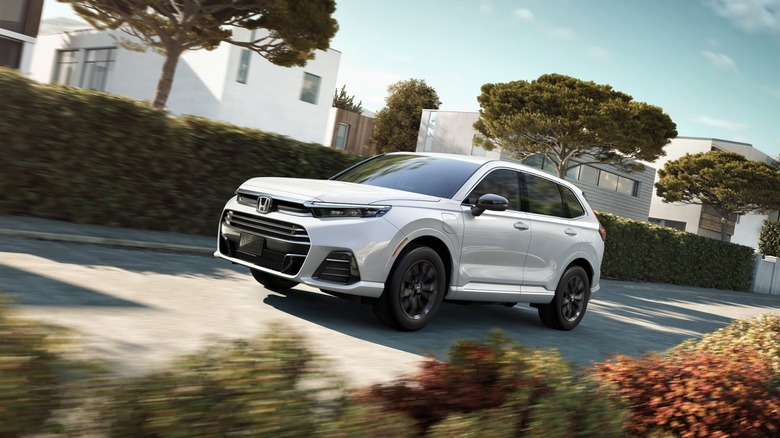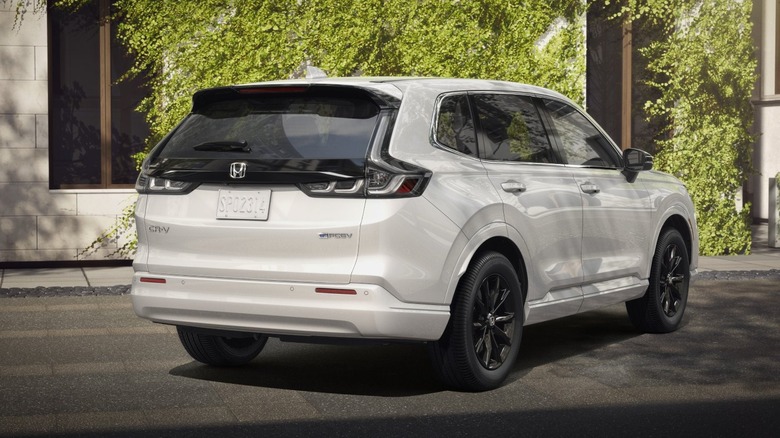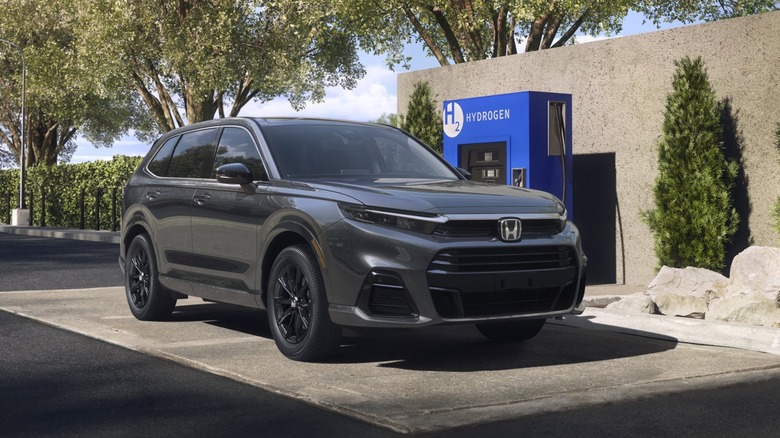2025 Honda CR-V e:FCEV Plug-In Fuel-Cell SUV Puts Its Electric Bet On Hydrogen
The market share for electric vehicles is steadily creeping up, and the US alone is estimated to have over 2.4 million EVs and hybrids combined, nearly half of which were sold in 2023. Meanwhile, alternative non-polluting fuels such as hydrogen fuel cells are enticing enthusiasts in the backdrop, and Japanese car brands are helping lead the charge toward them.
Honda, which has some experience dabbling with the hydrogen fuel-cell vehicle (HFCV) engine on the 2021 Honda Clarity — and FCX nearly two decades prior — is formally revealing its latest vehicle with this engine. It just announced the 2025 Honda CR-V e:FCEV with a hydrogen-based fuel cell developed alongside General Motors.
The FCEV segment is nascent for its non-traditional use of the electric motor. Instead of the large battery pack that stores and provides power to an electric engine on a traditional EV, an FCEV uses a fuel cell, usually hydrogen-based, as its power source. The hydrogen is combusted to charge an intermediary battery that propels the wheels.
Minor design edits
When available, the 2025 Honda CR-V e:FCEV will only be the third FCEV selling in the US — and the first one made in the US. The other two are the Toyota Mirai, which is the most popular HFCV in the US, and the Hyundai Nexo, which hasn't changed much since the original launch half a decade ago.
The crossover gets an EPA-tested range of 270 miles on the hydrogen fuel cell, while the battery allows plug-in charging that extends the range further by 29 miles. The 2025 CR-V e:FCEV is built with two hydrogen fuel tanks that can hold a combined 4.3 kilograms of pure hydrogen gas.
With the FCEV, Honda opts for a lower hood, a smaller grille, and 18-inch wheels but with 10 spokes instead of the usual five for a distinctive appearance compared to the gas and hybrid variants. Besides a dipped hood, Honda has also redone the A-pillar, liftgate, and rear fascia and claims to have optimized the aerodynamics using a front spoiler and rake.
More power than gas models
The most significant change the FCEV variant sees on the inside is a new 10-inch digital instrumentation cluster instead of the smaller and only partially digital one that preceded it. It retains the 9-inch infotainment display with wireless Android Auto and Apple CarPlay from the EX-L and Sport Touring models. Level 1 ADAS, as part of the Honda Sensing Suite of features, also comes as standard, like the IC models.
When it comes to the drivetrain, the 2025 Honda CR-V e:FCEV delivers 174 horsepower of output and 229 pound-feet of torque. In comparison, the 1.5-liter gasoline CVT provides 190hp and 179 lb-ft of torque, while the Sport models featuring the 2.0-liter hybrid deliver 200 horsepower when the values are combined with the electric motor's power.
Honda says the CR-V e:FCEV will be available for leasing late this year in California, the only state it will sell in despite manufacturing in Ohio. It hasn't spoken of the price, but we expect the novelty — and the complexities in manufacturing — to result in a higher price than the Sport Touring model's $42,000 MSRP.


